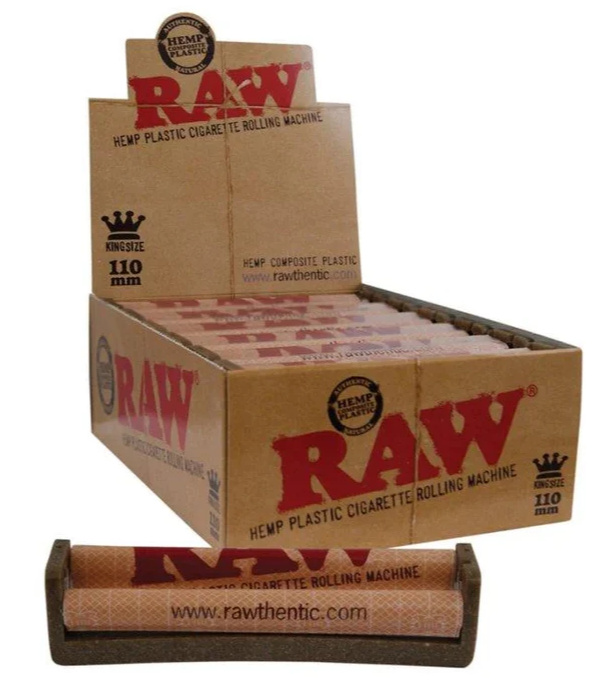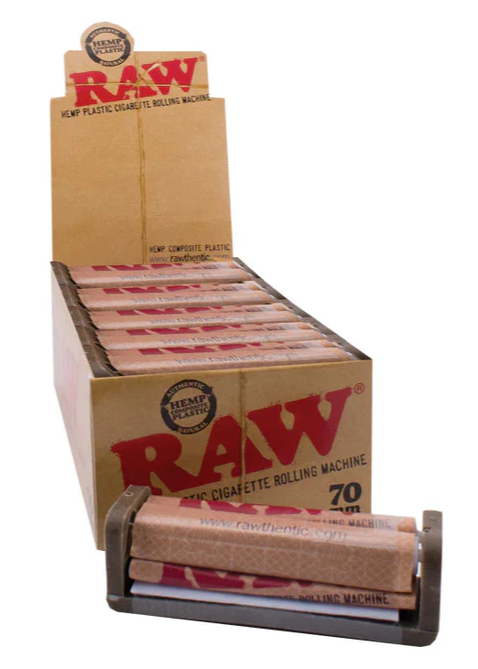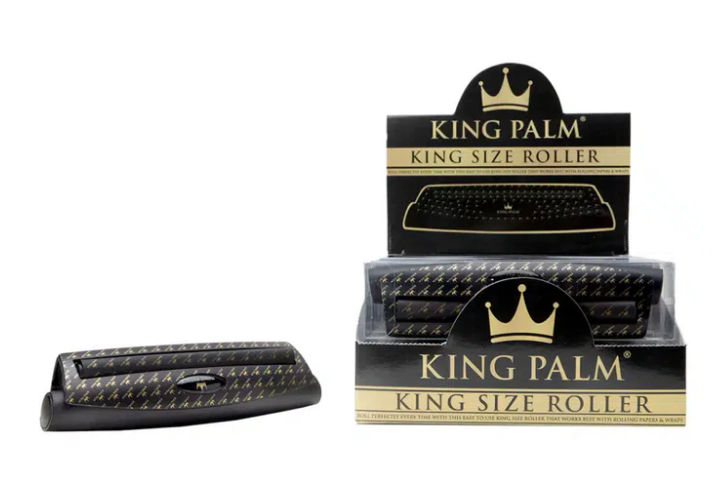Introduction:
In the realm of tobacco enthusiasts, there exists a time-honored tradition that transcends mere smoking—it’s the art of rolling. Delving into this craft offers enthusiasts a journey of exploration, creativity, and ultimate satisfaction. Today, we venture into the realm of rolling cigars and cigarettes, uncovering the nuances, techniques, and joys that come with crafting your own smokes.
Understanding the Cigar/Cigarette Roller: A Tool of Precision
A cigar/cigarette roller is a handheld device designed to facilitate tobacco rolling into cigars or cigarettes. It typically consists of two main components: a rolling channel and a mechanism for compacting and sealing the tobacco-filled rolling paper. These rollers come in various sizes and designs, catering to different preferences and rolling styles.
Origins: A Glimpse into the Past
The roots of rolling tobacco can be traced back to ancient civilizations, where indigenous peoples cultivated and smoked tobacco for ceremonial, medicinal, and social purposes. Evidence of early tobacco use dates as far back as 5000-3000 BCE in the Americas, where indigenous tribes rolled dried tobacco leaves into crude cigars or smoked them in pipes.
Evolution: From Hand-Rolling to Automation
The practice of hand-rolling cigars and cigarettes persisted throughout history, with artisans refining their techniques and tools over time. However, it wasn’t until the Industrial Revolution in the 18th and 19th centuries that significant advancements in manufacturing processes revolutionized the tobacco industry.
The invention of the first mechanical rolling machines in the 19th century marked a pivotal moment in tobacco history. These machines automated the rolling process, increasing production efficiency and standardizing the quality of cigars and cigarettes. However, early machines were bulky and cumbersome, requiring skilled operators to oversee the manufacturing process.
Invention of the Cigar/Cigarette Roller: A Game-Changer
The modern cigar/cigarette roller, as we know it today, emerged in the 20th century, driven by innovations in design and engineering. These handheld devices offered enthusiasts a portable and convenient way to roll their smokes with precision and ease.
One of the key inventors credited with revolutionizing the rolling process is Juan Pablo Martinez, who patented the first handheld cigarette roller in the United States in the early 20th century. Martinez’s invention streamlined the rolling process, allowing users to produce consistently rolled cigarettes with minimal effort.
Advantages of Using a Roller: Precision and Efficiency
One of the primary advantages of using a cigar/cigarette roller is its precision. The rolling channel ensures an even distribution of tobacco, resulting in a well-packed and tightly sealed smoke. This consistency is particularly beneficial for beginners who may struggle with hand-rolling techniques.
Additionally, rollers streamline the rolling process, making it quicker and more efficient. With practice, users can produce multiple cigars or cigarettes in a fraction of the time it would take to hand-roll each one individually. This efficiency is especially valuable for those who enjoy rolling their smokes but have limited time or dexterity.
How to Use a Cigar/Cigarette Roller: Step-by-Step Guide
- Prepare Your Materials: Start by gathering your tobacco, rolling papers, and cigar/cigarette roller. Ensure that your rolling papers are the appropriate size for your roller.
- Load the Roller: Open the roller and place a rolling paper flat in the rolling channel, with the adhesive strip facing you. Spread a thin layer of tobacco evenly along the length of the paper, leaving a bit of space at the ends.
- Rolling Action: Close the roller and use your fingers to gently roll the mechanism back and forth, applying even pressure to compact the tobacco into a cylindrical shape. Continue rolling until the paper is tightly wrapped around the tobacco.
- Seal and Finish: Once rolled, moisten the adhesive strip with your tongue or a damp cloth and press it firmly against the paper to seal the cigar or cigarette shut. Open the roller and carefully remove your handcrafted smoke, inspecting it for any imperfections or unevenness.
Highlights of Using a Roller:
- Precision and Consistency: Roller ensures an even distribution of tobacco, resulting in well-packed and tightly sealed smokes, perfect for those seeking consistency in their smoking experience.
- Efficiency: Streamlines the rolling process, allowing users to produce multiple cigars or cigarettes quickly and efficiently, making it ideal for those with limited time or dexterity.
- Ease of Use: Provides a structured framework for rolling, making it particularly beneficial for beginners who may struggle with hand-rolling techniques.
Drawbacks of Using a Roller:
- Limited Customization: Some rollers may restrict the customization options available when compared to hand-rolling, such as the ability to adjust tobacco density or blend different tobaccos.
- Initial Investment: Acquiring a quality roller may require an initial investment, which could deter some enthusiasts who are accustomed to hand-rolling without additional tools.
- Learning Curve: While rollers offer convenience, there may be a learning curve associated with mastering the use of the device, particularly for those transitioning from hand-rolling methods.
Some Of Roller From Our Site:
Raw Roller 110mm King Size Rolling Machine

Raw 70mm Single Wide Roller

King Palm’s Supreme King Size Blunt Roller

Juicy Jay’s Perfect Cigar Roller

Conclusion: Elevating Your Rolling Experience
In conclusion, a cigar/cigarette roller offers precision, efficiency, and consistency, enhancing the smoking experience for enthusiasts. While it may have drawbacks such as limited customization and a learning curve, the benefits make it a valuable tool for any tobacco aficionado. Embrace the artistry of rolling with a cigar/cigarette roller, and elevate your smoking experience to new heights.
Frequently Asked Questions(FAQs):
HOW AND WHERE ARE ROLLERS MADE?
All of our products are handcrafted at our family-run shop in Belgrade Montana. We use some pretty awesome power tools to help us prep the wood and cut out the parts but everything is assembled and finished by hand.
WHAT MATERIALS ARE THE CIGARETTE ROLLERS MADE FROM?
Our cigarette, joint, cigar rolling machines, and accessories are made from solid furniture-grade hardwoods. All our rollers are made from walnut or mahogany. The rest of the hardware is solid brass or stainless steel. The rolling cloth is synthetic and is very durable and easy to clean. Once assembled, our rollers are finished with a natural beeswax-based finish.
CAN YOU ROLL OTHER THINGS BESIDES TOBACCO?
Our cigarette and joint rolling machines work equally well for rolling shredded tobacco leaves and ground cannabis flowers. Our cigar rollers and to some degree the Long Bed can be used to roll cannagars or cigars with whole-leaf tobacco but can also be used to roll regular joints, blunts, and cigarettes.
WILL I NEED TO REPLACE THE CLOTH?
With normal use, it takes a good long while to wear out the rolling cloth but it can happen, especially if used for production purposes. If you damage the rolling cloth or use it to death, we’ve made it pretty easy to replace. Just email us and we can sell you a replacement and walk you through it. Eventually, you will be able to order them through the website.
WHAT SHOULD I USE TO CLEAN MY ROLLER?
Both the rolling cloth and roller can be cleaned with a light dish/hand soap and water. If the cloth gets sticky with resin from rolling cannabis, rubbing alcohol works wonders. Be careful to keep the alcohol off of the wood as it can remove the wax finish.